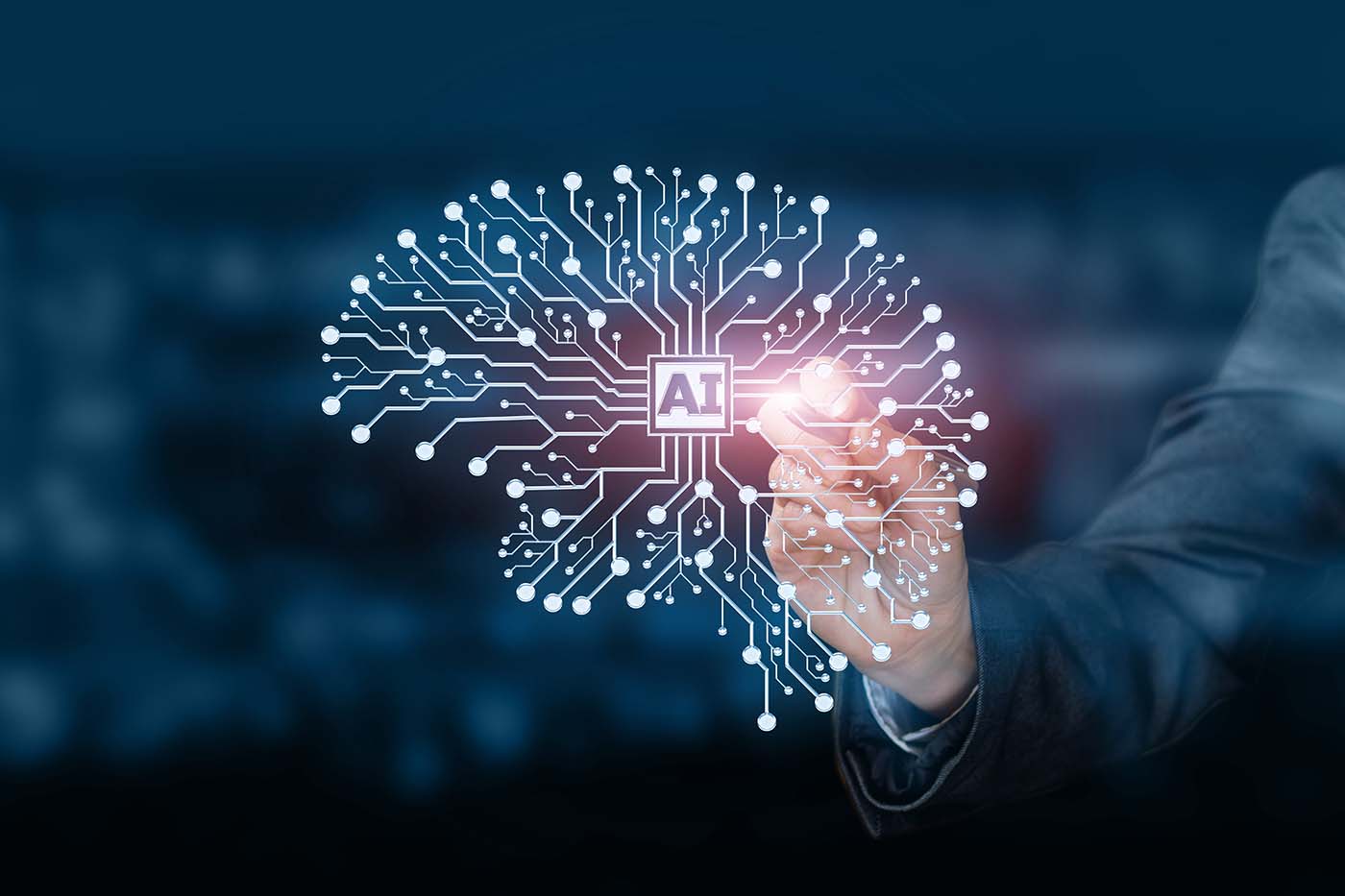OutSystems AI Agent Builder Brings No Code Development to GenAI
OutSystems continues to bring the power of AI together with low code app development thanks to its latest addition to its OutSystems Developer Cloud platform, AI Agent Builder. IDN speaks with OutSystems co-founder Rodrigo Coutinho.
by Vance McCarthy
Tags: AI, cloud, GenAI, LLM, low-code, OutSystems, RAG,

Co-Founder

"AI Agent Builder gives IT teams everything they need to build generative AI agents and embed them within new or existing applications -- without coding or AI expertise."
OutSystems continues to bring the power of AI together with low code app development thanks to its latest addition to its OutSystems Developer Cloud platform, AI Agent Builder.
AI Agent Builder aims to make it easier for enterprises to create and deploy manageable and governable GenAI-driven apps, Rodrigo Coutinho, OutSystems’ co-founder and AI product manager told IDN.
“AI Agent Builder gives IT teams everything they need to build generative AI agents and embed them within new or existing applications, without any prior coding or AI expertise,” Coutinho said. With this new offering, OutSystems looks to address today’s critical shortage of AI talent, while also saving time and money in AI projects, he added.
AI Agent Builder enables rapid and secure integration of generative AI into applications and operations. According to OutSystems’ product details, AI Agent Builder, lets users:
Build GenAI agents into your apps—in minutes, not months.
Users can combine the power of LLMs, RAG, and proprietary knowledge sources for seamless integration into OutSystems apps. No specialized AI skills are required.
Secure, monitor, and ensure AI implementation and accuracy
Users can control access to models, proprietary data, and agents to scale GenAI safely. They can also monitor AI model performance for accurate, trustworthy results.
Scale and standardize AI solution development and deployment
Users can bring different AI models and knowledge sources together into a single platform for building GenAI apps for a simpler, more scalable dev process.
Inspire GenAI-based business innovations
With AI Agent Builder, users can reinvent work with apps for ticket deflection, call summaries, and private GPT. Improve efficiency, increase customer satisfaction, and scale personalization.
In short, AI Agent Builder lets non-technical users create “agents” that can offer human-like responses and actions – all without coding or technical knowledge. An easy-to-use visual interface lets users assemble a combination of company (or public) data, foundational models and OutSystems integration capabilities, Coutinho explained.
And what exactly is an “AI agent,” in OutSystems’ view? Takin Babaei, OutSystems Principal Marketing Manager shares this description: “AI agents are like smart robots. They “live” inside your apps and are capable of autonomously executing a multitude of tasks without human intervention. Their capabilities extend beyond mere conversation; they can analyze, make decisions, and take action based on the data they process. They can chat with other agents or even with us humans, using everyday language or other ways to communicate.”
AI agents work in consort with models Azure OpenAI or Amazon Bedrock, support a “plain English” language (GenAI) interface and work with knowledge base data (recommended from AWS Kendra or Azure Blob storage.)
AI Agent Builder Also Offers An Easy-To-Understand AI Recipe
OutSystems' AI Agent Builder also offers an easy-to-understand AI recipe.
Users can choose to work with Azure OpenAI or AWS Bedrock foundation models, which then get integrated with targeted data and knowledge sources. Then, natural language instructions are added (e.g., “you are a friendly customer support agent”) for ease-of-use inside applications.
To further jumpstart AI for users, OutSystems has also begun to offer a library of sample agents – similar to apps in an Appstore. “We offer samples because we also believe that people still need a bit of inspiration on the things that are possible with AI,” Coutinho told IDN.
Users can use these sample agents out of the box or customized, he added.
“We made samples of ready-to-use agents. So someone that doesn't have IT expertise would go to AI Agent Builder and the first thing they see is actual sample applications -- ready to run. When you click it, you can start using it and testing it,” Coutinho said. “And for customization, we have a playground, where people can just play with the agents, pose questions, and make sure they’re get the [right] answers. A very important part of the development cycle of an AI powered application is this fine-tuning of what will show up in the answers and tone.”
Within the playground, users can safely finetune the agent, the model, the knowledgebase, and the prompts, he added.
To date, OutSystems offers sample agents to support ticket deflection, call summarization and even a “Private GPT” agent, with plans to add more.
Architecturally, AI Agent Builder provides a “blueprint” for IT leaders to help accelerate AI adoption, deployment, even broad AI-driven business strategies.
Architecturally, the key AI Agent Builder features include:
- Custom AI agent development, facilitated by an intuitive point-and-click interface, allowing users to seamlessly design, configure, and deploy generative AI agents customized to meet their specific business requirements, all without the necessity of coding.
- A library of quick-start generative AI apps, including a ticket deflection application that generates accurate responses to customer questions in a customer-facing user interface, and a sales intelligence application that summarizes support calls.
- AI agents powered by retrieval-augmented generation (RAG) to ensure outputs more tailored to applications’ end-users, based on their own data.
- Built-in guardrails to control access and performance monitoring to increase accuracy and trustworthiness of results.
To further help users optimize their AI-built agents, OutSystems also offers instructions and best practices for prompt engineering, Coutinho added.
Users, Analyst Reacts to OutSystems AI Agent Builder
IT execs at KeyBank are using OutSystems Developer Cloud platform, which offers them a dual approach combining GenAI with low code.
“Our IT team has effectively shortened delivery time frames by leveraging OutSystems’ low-code platform, ” said Dominic Cugini, Chief Transformation Officer at KeyBank. “This adoption not only facilitates closer collaboration and communication between business and IT, but also opens up exciting possibilities for innovation through the combination of low code with generative AI.”
Moreover, at least one analyst firm sees benefit when combining Gen AI with enterprise apps, especially apps built with low-code technologies.
"Incorporating conversational, GenAI-driven user experiences into apps created within a trusted, scalable, extensible, and governable framework represents the potential for a new generation of low-code development," said Michele Rosen, PhD, IDC research manager for Low-Code, No-Code, and Generative AI Developer Technologies. "Organizations will be able to leverage tools and platforms with agent building capabilities to accelerate their adoption of GenAI for digital transformation."
Spectrum Broadens Across “Recommendation Engines” and “Native AI”
And one last point on this topic of the broadening delta between recommendation engines (as found in traditional low) and emerging “native AI.”
Coutinho shared an interesting take on the difference between using traditional ‘low-code recommendation engines” alone verses using low-code alongside today’s GenAI technologies.
So, it's interesting. When you have a recommended system, you are much more constrained by the data structures and [evaluate] similarities. Everything is very jelled into the architecture.
With these new AI systems, we get to be much more fluid. So, instead of only using a comparison of everything in your database that was already done, we can add all the knowledge that’s available [from anywhere.]
[With GenAI,] we can bring in knowledge from GitHub about how people develop Python applications into OutSystems. It’s very interesting to join the two things.
AI Agent Builder is the latest release in OutSystems’ three-pronged GenAI strategy, which includes:
1) Using GenAI to accelerate iterative application development;
2) Applying GenAI throughout the development lifecycle to improve security, performance & agility;
3) Building GenAI-powered apps to accelerate transformation.
“AI is driving a paradigm shift in how enterprise tech strategies are developed and implemented, but digital transformation leaders often don’t know where to get started,” said Paulo Rosado, Founder and CEO at OutSystems. “In fact, 75% of OutSystems customers are still in the beginning stage of generative AI implementation, and we want to help them meet the moment.”
Related:
- SolarWinds Brings “Resilience’ to IT Ops for Agentic AI and Autonomous Operations
- Tray Enterprise-Class AI Platform Casts Light on “Shadow MCP” and Controls “AI Sprawl”
- Xano 2.0 Updates Production Grade Backend for AI, Apps To Solve "Vibe Coding Trap"
- Ai4 2025 Vegas Wrap-Up: What Enterprises Need to Know About Emerging AI Solutions
- Boomi Agentstudio Looks To Deliver Full-Featured Management Platform for AI Agents
All rights reserved © 2025 Enterprise Integration News, Inc.



